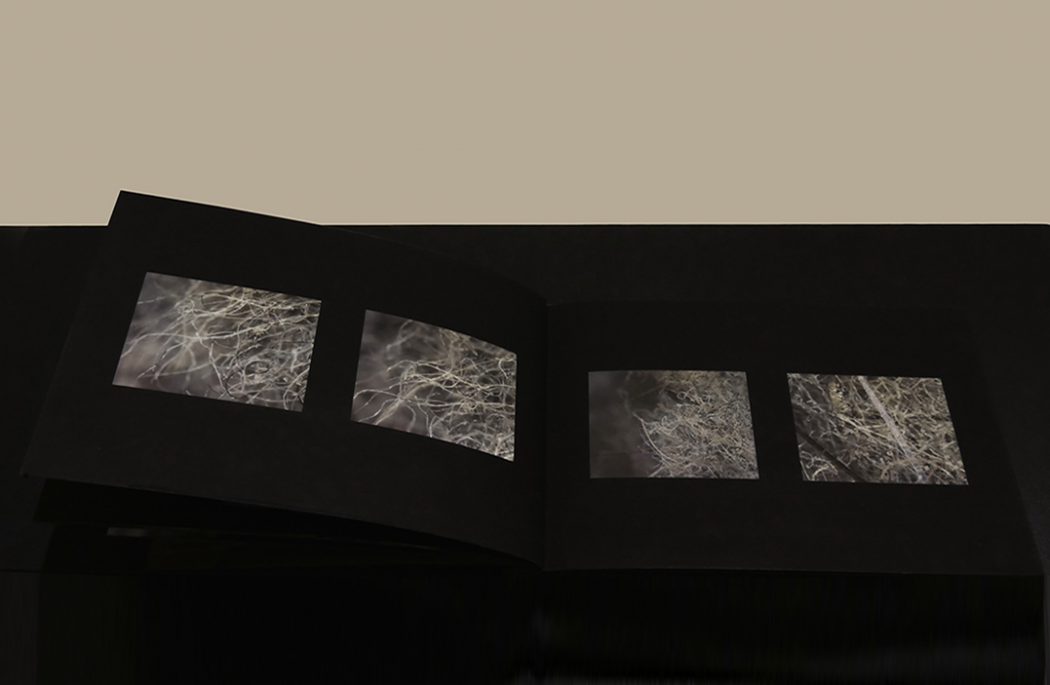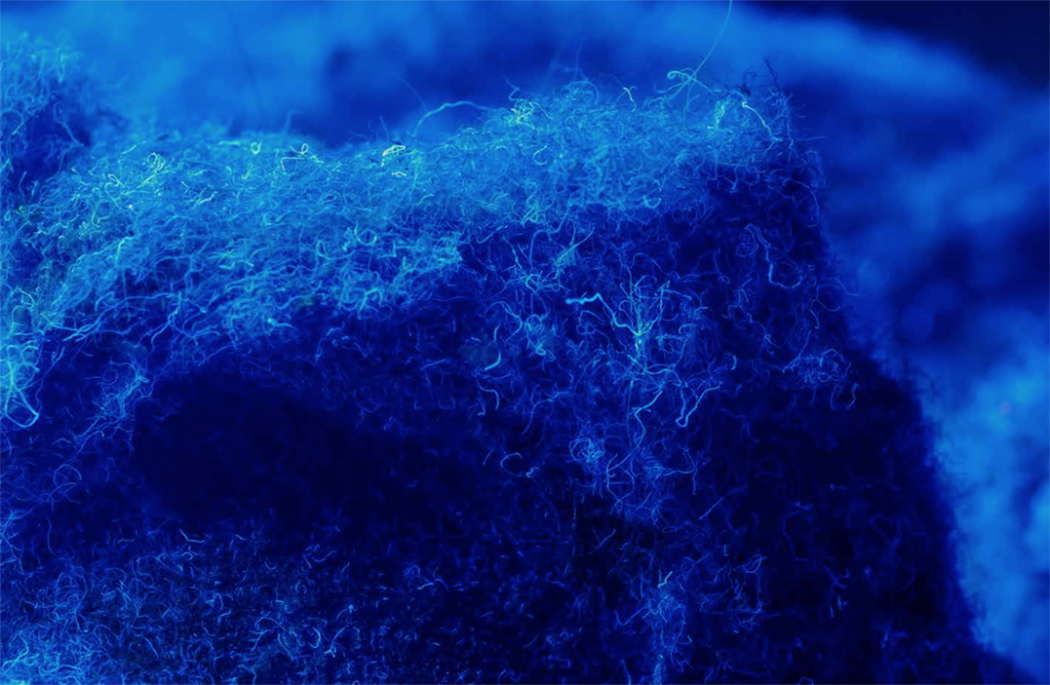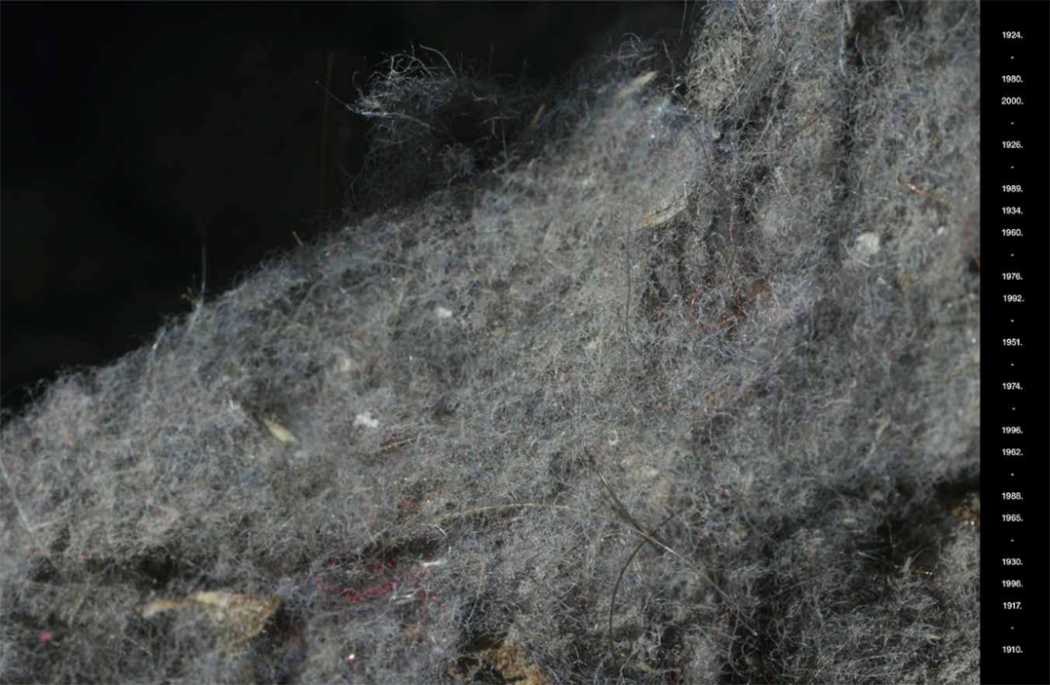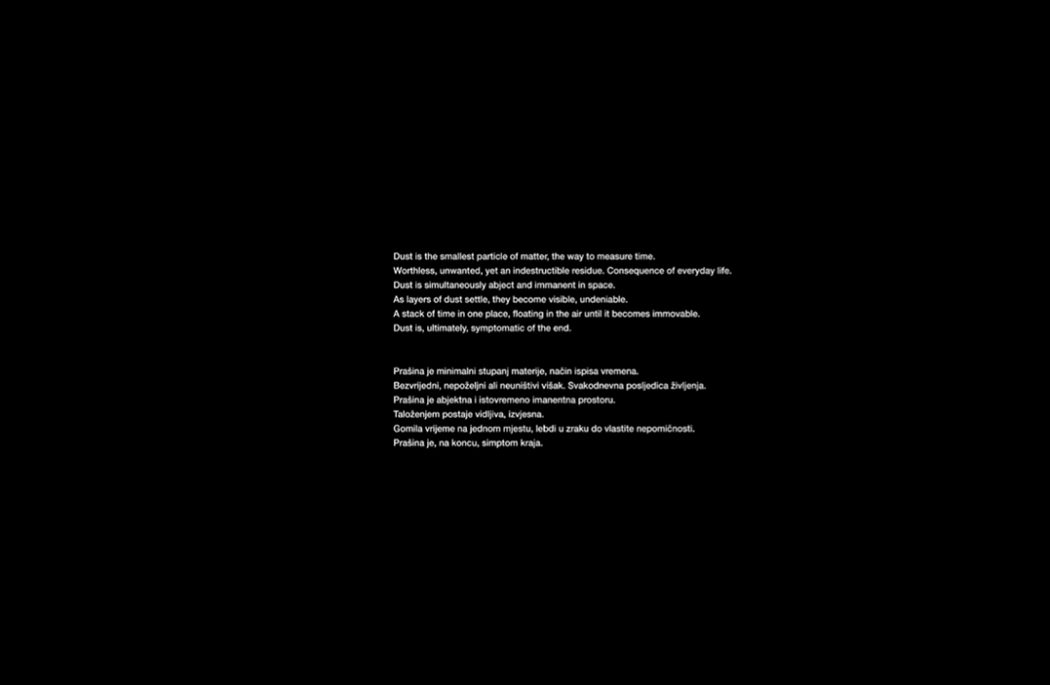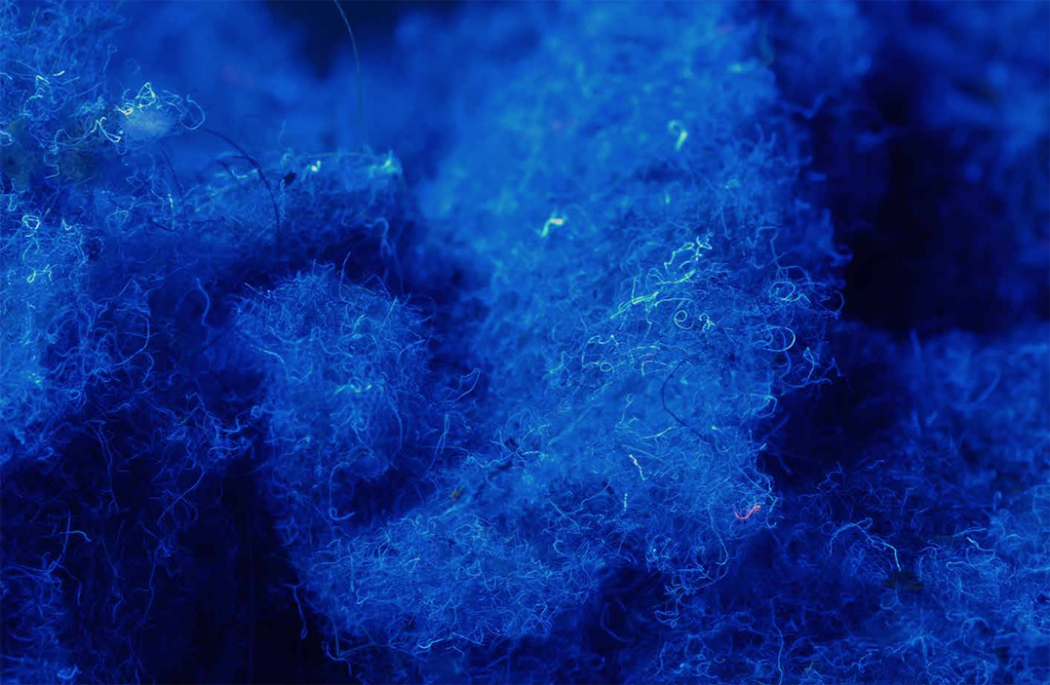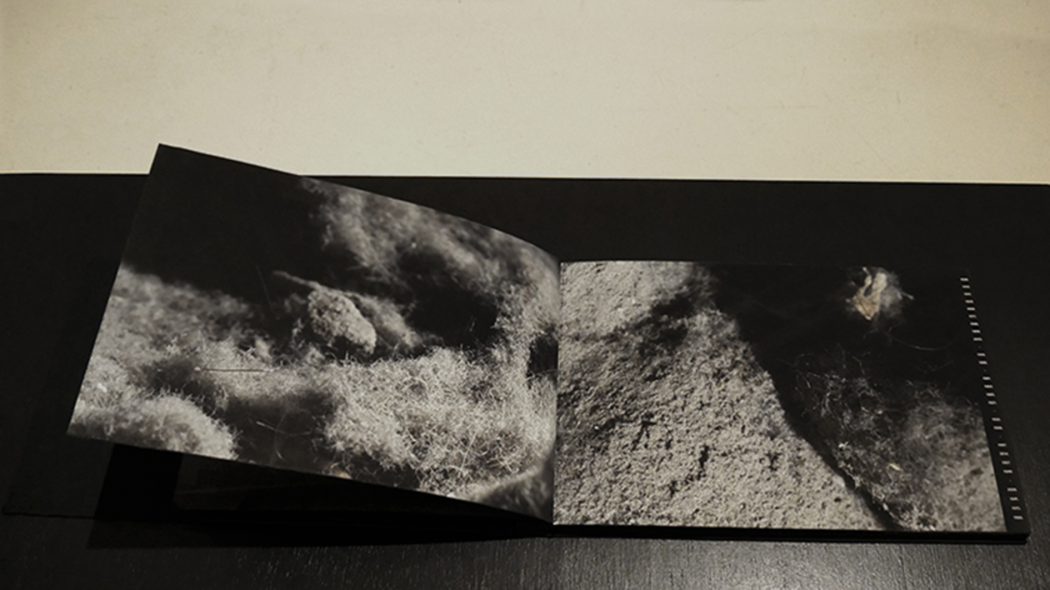Fine art restorer Žana Matulić Bilač collected the dust in 2014 during restoration of the back side of the Romanesque doors of the Split Cathedral created by Master Andrija Buvina in 1214. The particulates of dust have been accumulating ever since their last restoration, conducted in 1908 by Antonin Švimberský, according to Max Dvořák’s guidelines and supervised by don Frane Bulić. In 2018, a forensic science student Josipa Marić conducted an optical analysis of a sample of the collected dust, and using the FTIR, XRF, SEM and UV-Vis analysis she identified a compound matter composed of particles of pigment (ochre), stone, mineral, fibres of different fabrics coated in particles of the human epithelial tissue and other organic matter: eye lashes and human hairs. Macro photographs taken under artificial and UV light, as well as microscopic photographs magnified 200x in the visible and IC spectrum, have been used in the book. Primarily visible, besides the micro remains of the space itself, were the layered cloth fibres. For the most part, they create an index trace of human bodies that visited the cathedral. Layers of thread and the passage of time created by the movement of bodies are completely intertwined and create a single transgenerational body, the fragile communal memory.
All photographs in the book were taken by Neli Ružić, 2018, except the photographs of individual fibres, eye lashes and hairs taken by Josipa Marić, 2018.
